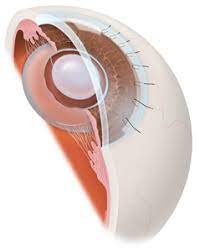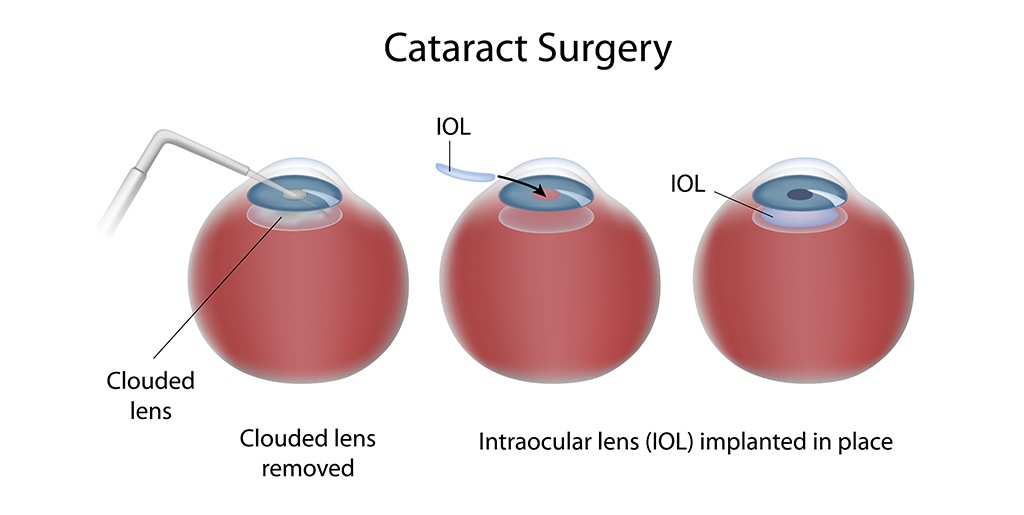Cataracts are a common eye condition that can cause blurred vision and difficulty seeing in low light. If you are experiencing these symptoms, you may need cataract surgery to remove the cloudy lens from your eye. Many people have thought that with the advancement of medicine, we can finally live without having to undergo surgery for minor ailments. However, despite advancements in medicine and technology, there are still many procedures that require us to undergo surgery – including intracapsular cataract extraction. This procedure is highly beneficial for patients suffering from severe cataracts because it allows them to see better without the need for another operation. In this blog post, we will discuss intracapsular cataract extraction: what it is, how it is performed, and the benefits and risks of the procedure. We will also answer some frequently asked questions about intracapsular cataract extraction.
Contents
- 1 What Is Intracapsular Cataract Extraction?
- 2 How Intracapsular Cataract Extraction Can Be Performed?
- 3 What Is The Difference Between Intracapsular and Extracapsular Cataract Extraction?
- 4 What Are The Benefits Of Intracapsular Cataract Extraction?
- 5 What Are The Risks Of Intracapsular Cataract Extraction?
- 6 What Is The Purpose Of Intracapsular Cataract Extraction?
- 7 What Are Some Alternatives to Intracapsular Cataract Extraction?
- 8 Conclusion
What Is Intracapsular Cataract Extraction?
Lens extraction is the mainstay of modern cataract surgery. It can take place within or outside of the eye, with either intracapsular or extracapsular extraction. An extracapsular surgical approach is becoming more popular because it allows for a posterior chamber intraocular lens to be inserted, and has fewer overall complications. The main complication is the development of posterior capsule opacification.
Intracapsular cataract extraction (ICE) is a surgical procedure used to remove a lens from an eye that has a cloudy appearance due to a cataract. It is the most common form of cataract surgery and typically involves removing the entire lens, along with the capsule surrounding it. The intracapsular cataract extraction method was the procedure of choice in industrialized nations because there were fewer complications such as retinal detachment and cystoid macular edema. Over time, more advanced extracapsular techniques were developed and this has become the procedure of choice for the removal of cataracts and glaucoma.
How Intracapsular Cataract Extraction Can Be Performed?
It can be performed:
1. By manually extracting the cataract through an incision made in the eye (manual extraction). This is done using a special instrument called a viscoelastic needle, which helps to break up and remove the hard lens capsule that holds the cataract in place.
2. By making a small cut into the eye that gives access to the cataract and then using an ultrasound device to break up and remove the lens (phacoemulsification). This is a faster, less invasive procedure than manual extraction.
3. By using a laser to break up the cataract into small pieces, which are then removed through a tiny incision (laser-assisted cataract extraction or LACE).
After the cataract is removed, an artificial intraocular lens (IOL) will be implanted in its place. This IOL helps to restore vision.
What Is The Difference Between Intracapsular and Extracapsular Cataract Extraction?
The difference between Intracapsular and Extracapsular Cataract Extraction are as follows:
- Intracapsular cataract extraction is a type of surgery that involves removing the entire eye lens, along with the surrounding capsule (clear membrane) containing it. This method is more invasive and carries a greater risk of complications than extracapsular extraction.
- Extracapsular cataract extraction involves removing only the lens, leaving behind the capsule. This method is less invasive and carries a lower risk of complications than intracapsular extraction.
- To implant an IOL through the extracapsular pathway – in which case the hybrid is made of four components, the anterior capsule, lattice or hard nucleus, posterior capsule, and cortex of the lens – excision of portions of both the posterior and anterior capsules can be carried out to facilitate access to the implanted lens.
What Are The Benefits Of Intracapsular Cataract Extraction?

The main benefit of ICCE is that it preserves the natural shape and structure of the eye. This can reduce the risk of complications and improve overall results, as well as make vision more stable after surgery. Other benefits include faster recovery time and a lower risk of infection.
The benefits of intracapsular cataract extraction include:
- Reduced risk of inflammation and infection: Due to fewer incisions and the removal of the capsule which may harbor bacteria.
- Less risk of complications: There is less risk of complications such as macular edema or cystoid macular edema (CME).
- Hard Cataracts: It is an effective method for treating hard cataracts that cannot be removed through extracapsular extraction.
- Improved vision: Provides a clearer view and improved vision by removing the entire lens.
- Other Techniques: It may be used in cases where other techniques cannot be utilized, such as those with advanced cataracts or traumatic injury to the eye.
What Are The Risks Of Intracapsular Cataract Extraction?
The risk is as follows:
- Eye infection: As with any surgical procedure, there is a risk of an eye infection following intracapsular cataract extraction. To minimize this risk, the patient must follow all of their doctor’s post-operative instructions carefully and make sure to use antibiotic eye drops as prescribed.
- Increased intraocular pressure: Intraocular pressure can rise following, and this can lead to glaucoma or other serious eye issues if not managed.
- Retinal detachment: The risk of retinal detachment is higher following intracapsular cataract surgery than after extracapsular cataract extraction.
- Poor vision: If the patient does not wear corrective eyewear as directed, or if their eye has healed improperly after surgery, they may experience poor vision in that eye.
- Cataract recurrence: Although rare, it is possible for the cataract to recur in the same eye after intracapsular cataract extraction.
What Is The Purpose Of Intracapsular Cataract Extraction?
The purpose of intracapsular cataract extraction (ICCE) is to remove a clouded lens from the eye. It is an older method of removing cataracts but is still used in some cases. In ICCE, the entire lens is removed with its capsule intact, thus preserving the natural shape and structure of the eye.
The purpose is to remove the lens in its entirety by digesting the suspensory ligament with alpha chymotrypsin. This is done by injecting alpha chymotrypsin into the posterior chamber and then removing the lens with a forceps or cryoprobe.
It is a surgical procedure used to treat cataracts—a condition where the lens of the eye becomes cloudy. ICE involves removing the entire lens, including its capsule or membrane, from its position in the eye. This treatment option may be recommended if other less invasive treatments have not been effective.
During this procedure, the ophthalmologist will make a small incision in the eye and then carefully remove the lens. Since ICE involves separating the entire lens from its capsule, it tends to be more successful than other surgical treatments. Additionally, ICE can help preserve vision better than some other procedures.
What Are Some Alternatives to Intracapsular Cataract Extraction?
Intracapsular cataract extraction is a surgical procedure that is used to remove the lens from inside the eye. This is different than other methods of cataract removal, such as extracapsular cataract extraction, which removes the lens outside of the eye. Intracapsular cataract extraction is often chosen over other methods because it is less likely to cause additional damage to the surrounding tissues. Additionally, this procedure can be done on an outpatient basis, which may make it more convenient for patients.
Some other alternatives to Intracapsular Cataract Extraction include:
Laser cataract surgery
Laser cataract surgery is a type of cataract surgery that uses a laser to remove the lens from inside the eye. This procedure is less invasive than traditional cataract surgery and may be more suitable for certain patients.
It is a type of cataract surgery that uses a laser to remove the lens from inside the eye. This procedure is less invasive than traditional cataract surgery and may be more suitable for certain patients.
Intraocular lens implantation
Intraocular lens implantation is another option for removing the lens from inside the eye. This procedure involves surgically inserting an artificial lens into the eye. The implant may be removable or fixed, depending on the patient’s needs.
This procedure involves surgically inserting an artificial lens into the eye. The implant may be removable or fixed, depending on the patient’s needs.
Cryotherapy
Cryotherapy (also known as cryosurgery) is a type of medical treatment that uses freezing temperatures to remove or destroy tissue. This procedure is often used to remove cataracts. This procedure is often used to remove cataracts.
Surgical removal of the lens
Surgical removal of the lens is another option for removing the lens from inside the eye. This procedure involves surgery to remove the lens and any other debris from within the eye.
Ophthalmic surgery
Ophthalmic surgery includes a variety of procedures that are used to treat problems with the eyes. This includes cataract surgery, which is mentioned above.
Intraocular lens transplant
Intraocular lens transplant is a procedure in which a donor lens is implanted into the eye of a patient who needs to have their lens removed. This may be an option for patients who have lost their own lenses due to cataracts or other conditions.
Surgical removal of the cataract
Surgical removal of the cataract is another option for removing the lens from inside the eye. This procedure involves surgery to remove the cataract and any other debris from within the eye.
Conclusion
It may be concluded that intracapsular cataract extraction is a safe, effective, and relatively straightforward procedure for removing cataracts. The surgery is generally well tolerated by patients with minimal risk of complications. While there may be some degree of post-operative discomfort and vision loss in the short-term, most patients can expect to regain their pre-operative level of vision in the long term.
Patients should consult with their ophthalmologist to discuss the potential risks and benefits associated with the procedure. Ultimately, it is important to have a proper understanding of intracapsular cataract extraction in order to make an informed decision about whether or not this type of surgery is right for you. With the right preparation and care, this procedure can provide excellent results and improve your vision.
Cataract surgery is a safe and painless procedure. At MantraCare we have a team of experienced eye surgeons, who will be happy to answer any questions on cataract surgery. Call us at +91-9711116605 for any inquiries.
